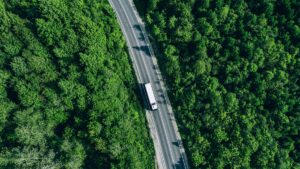Pure Hydrogen ready to lead the charge towards low cost, clean hydrogen production

Pure Hydrogen is ready for battle as it drives towards its low-cost hydrogen goals. Pic vi Getty Images.
Pure Hydrogen remains focused on becoming the lowest cost supplier of hydrogen in Australia by leveraging technology and supply from its emerald and turquoise manufacturing hubs.
Instrumental to the success of this strategy is the company’s partnership with technology companies such as CAC H2 and Omni with their respective emerald hydrogen manufacturing technologies and Plenesys for turquoise hydrogen production.
Both technologies seek to produce hydrogen with very low or no emissions while avoiding the use of carbon capture and storage, which remains controversial.
Emerald hydrogen uses wood waste as feedstock, first igniting the feedstock then retracting the air injection point to gasify it to produce hydrogen and a solid waste product while turquoise hydrogen uses methane pyrolysis – also known as methane decomposition – to create hydrogen and valuable solid carbon products from methane without CO2 emissions.
Leveraged tech
Pure Hydrogen (ASX:PH2) has three emerald hydrogen plants planned which use tech provided by CAC-H2.
Each plant will be capable of producing an initial 500kg of hydrogen per day before increasing to about 2,500kg/d.
The first of these plants will be located at a 21 hectare lot adjacent to the Beerburram State Forest at Moreton Bay, Queensland, under a joint venture with CAC-H2 who will provide the waste-to-hydrogen technology while Pure Hydrogen manages distribution and sales.
This is expected to be Australia’s first back-to-base refuelling station and is planned to be operational in the fourth quarter of 2023.
Hydrogen with valuable by-products
Pure Hydrogen is also looking to develop back-to-base and industrial turquoise hydrogen production modules using Plenesys’ AI controlled AC plasma torch to decompose Methane in an oxygen-free reactor.
This splits methane (natural gas) molecules into solid carbon and hydrogen gas, neatly sidestepping the problem older methane cracking technologies have of producing CO2 whilst producing valuable graphene and/or carbon nanotubes.
When powered by renewable energy, these scalable units will be capable of producing hydrogen cleanly with no emissions or the use of water.
Daily production is expected to be between 1,500kg to 5,000kg of hydrogen and 4,500kg to 15,000kg of carbon products.
The company expects to start development of a turquoise hydrogen pilot plant in the second quarter of 2023 with a commercial plant planned for 2024.
This article was developed in collaboration with Pure Hydrogen, a Stockhead advertiser at the time of publishing.
This article does not constitute financial product advice. You should consider obtaining independent advice before making any financial decisions.
Related Topics

UNLOCK INSIGHTS
Discover the untold stories of emerging ASX stocks.
Daily news and expert analysis, it's free to subscribe.
By proceeding, you confirm you understand that we handle personal information in accordance with our Privacy Policy.








